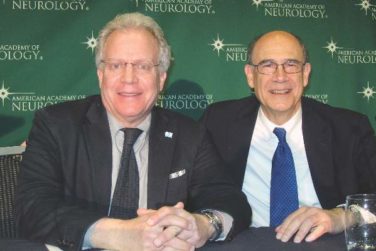FROM THE DIGESTIVE DISEASES MEETING
PHILADELPHIA (FRONTLINE MEDICAL NEWS) – The treatment of patients with hepatic encephalopathy is still plagued by confusion, misdiagnosis, and poor treatment, and requires new protocols to improve overall patient care.
“It’s surprisingly difficult to define hepatic encephalopathy [HE],” said Dr. Kevin D. Mullen, from the Metrohealth Medical Center in Cleveland, Ohio, who spoke at the second annual Digestive Diseases: New Advances meeting on Saturday. “It can range from subtle, minimal changes all the way to full-blown coma, but the only way to confirm [HE] is through psychometric testing.”
This inability to properly define HE can lead to problems for patients, Dr. Mullen explained. Many physicians tend to use too much lactulose in HE patients, which can lead to dehydration and hypernatremia, especially in patients in an hepatic coma. Hypernatremia is often treated with furosemide, which can lead to deafness in patients and delay recovery.
Additionally, improper use of rifaximin and metronidazole are common issues that need to be addressed by hepatologists, as well as the beliefs that precipitating factors do not need to be looked at very carefully when diagnosing and treating the condition, as well as the notion that concomitant disease – especially hypothyroidism – rarely, if ever, causes coma.
Management of HE, therefore, should always include identification and treatment of precipitating factors, physicians should rule out other potential causes of encephalopathy, unconscious patients should be given supportive care as soon as possible, and specific additional measures should begin right away based on the precipitating factors, which can also include hypo/hyperglycemia, CNS or systemic sepsis, and post-ictal confusion.
Dr. Mullen also talked about covert hepatic encephalopathy, a relatively new term that describes milder HEs that often are undiagnosed but can still cause severe consequences. Covert HE is often found in patients with cirrhosis, and can lead to cognitive deficiencies in attention, information processing, motor abilities, and can impair social, physical, and job-related interactions.
“The terms ‘subclinical’ and ‘minimal’ keep popping up, but we’re trying very hard to get people to use ‘covert,’” explained Dr. Mullen. “These are patients who have a normal neurological examination [but] subnormal performance in two or more psychometric tests, such as number connection tests A and B, line drawing, serial dotting, and digit symbol.”
Dr. Mullen disclosed being on the speaker’s bureau for Salix Pharmaceuticals, Inc.




